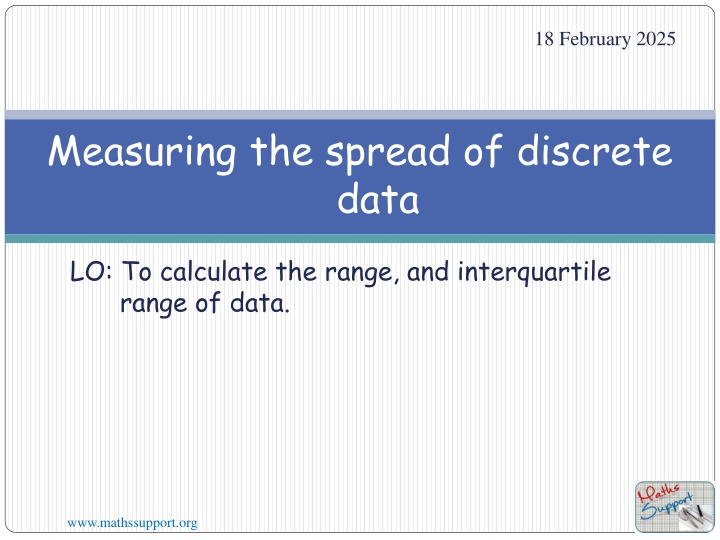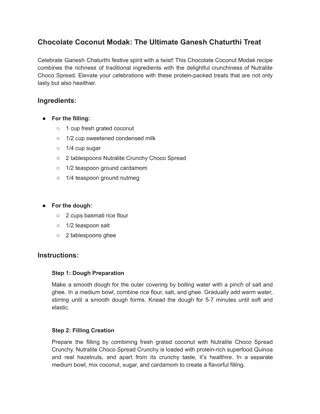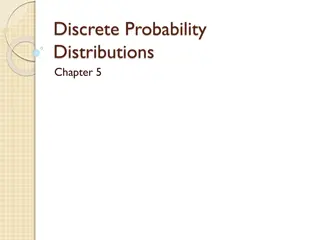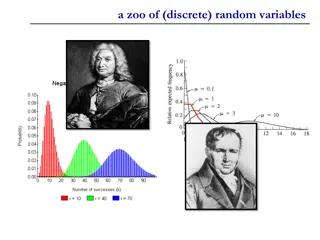Measuring the spread of discrete data
Learn how to calculate the range, median, quartiles, and interquartile range to measure the spread of discrete data. Understand the limitations of using just the range and discover more reliable measures. Examples and visuals provided for clarity.
Download Presentation

Please find below an Image/Link to download the presentation.
The content on the website is provided AS IS for your information and personal use only. It may not be sold, licensed, or shared on other websites without obtaining consent from the author.If you encounter any issues during the download, it is possible that the publisher has removed the file from their server.
You are allowed to download the files provided on this website for personal or commercial use, subject to the condition that they are used lawfully. All files are the property of their respective owners.
The content on the website is provided AS IS for your information and personal use only. It may not be sold, licensed, or shared on other websites without obtaining consent from the author.
E N D
Presentation Transcript
18 February 2025 Measuring the spread of discrete data LO: To calculate the range, and interquartile range of data. www.mathssupport.org
Measuring the spread of data To measure the spread of the data set we have these measures: Range: The range is the difference between the maximum (largest) and the minimum (smallest) data value. minimum Range = maximum Example 1: For the data below find the range 3, 4, 4, 6, 8, 8, 8, 9, 10, 10, 15, minimum Range = maximum Range = 15 Range = 12 3 www.mathssupport.org
Measuring the spread of data The range is not considered to be a particular reliable measure of spread because it uses only two data values It could be influenced by data values which are extremely low or extremely high compared with the rest of the data The median divides the ordered data set into two halves. If we divide these halves in half again we have the quartiles The middle value of the lower half is called the lower quartile or 25th percentile The middle value of the upper half is called the upper quartile or 75th percentile www.mathssupport.org
Measuring the spread of data The data set is thus divided into quarters by the lower quartile (Q1), the median (Q2) and the upper quartile (Q3) The interquartile range (IQR) is the range of the middle half or 50% of the data IQR = Q3 Q1 The interquartile range (IQR) is not affected by extremely low or extremely high data values, as these lie outside the middle 50% of data values. www.mathssupport.org
Measuring the spread of data Example 1: For the data below find: (a) The median (b) lower and upper quartiles (c) interquartile range Q2 Q3 Q1 3, 4, 4, 6, 8, 8, 8, 9, 10, 10, 15, Upper Quartile = 10 Lower Quartile = 4 Median = 8 IQR = Q3 IQR = 10 IQR = 6 Q1 4 www.mathssupport.org
Measuring the spread of data Example 2: For the data below find: (a) The median (b) lower and upper quartiles (c) interquartile range Q1 Q2 Q3 4, 4, 5, 6, 8, 8, 8, 9, 9, 9, 10, 12 Lower Quartile = 5 Upper Quartile = 9 Median = 8 IQR = Q3 IQR = 9 IQR = 3.5 Q1 5.5 www.mathssupport.org
Thank you for using resources from A close up of a cage Description automatically generated For more resources visit our website https://www.mathssupport.org If you have a special request, drop us an email info@mathssupport.org www.mathssupport.org























